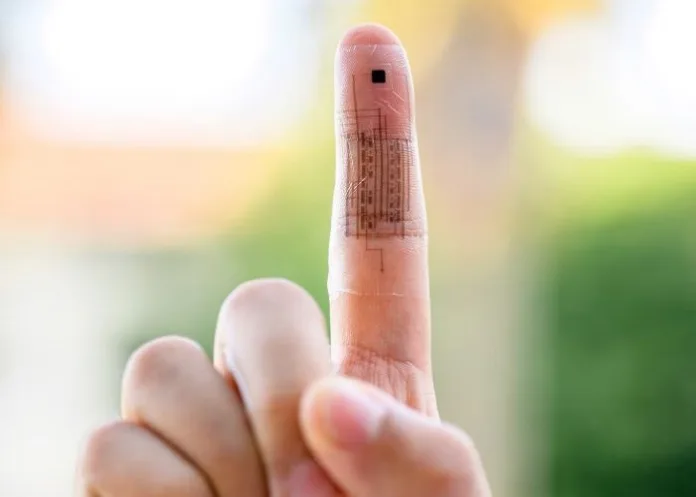A team of American scientists has invented a type of electronic skin that can “talk directly to the brain”, and would allow amputees to feel a human-like sense of touch through prosthetic limbs, sensing external factors like pressure and temperature.
The artificial skin is embedded with sensors for temperature, pressure and strain, which are converted into electrical signals – similar to how nerve impulses communicate with the brain, reports The Independent.
The wearable electronic circuit, known as a monolithic e-skin, was developed by scientists from Stanford University, who detailed their breakthrough in a study published in the journal Science.
Summarising the findings, Marc Lavine, the journal’s editor, said: “Our skin provides a protective layer for our bodies, but it also enables detailed sensory feedback and soft interactions with our surroundings. Wang et al devised a prosthetic electronic skin that incorporates organic semiconductor transistors and has no rigid components, thus mimicking the mechanical aspects of real skin.
“At the same time, it can sense external stimuli such as temperature and pressure and encode these stimuli into electrical pulses. The team showed that the prosthetic skin could evoke neuronal firings at the motor cortex in a rat in vivo, which triggered toe twitching.”
Stanford’s Professor Zhenan Bao, a senior author of the study, told The Independent that the next-generation technology could also be used to feel objects and sensations while controlling a robotic limb remotely.
“We’ve been working on a monolithic e-skin for some time,” Bao said. “The hurdle was not so much finding mechanisms to mimic the remarkable sensory abilities of human touch, but bringing them together using only skin-like materials.”
Weichen Wang, a doctoral candidate in Bao’s lab, added: “Much of that challenge came down to advancing the skin-like electronic materials so that they can be incorporated into integrated circuits with sufficient complexity to generate nerve-like pulse trains and low enough operating voltage to be used safely on the human body.”
A prototype of the e-skin, which is about the thickness of a piece of paper, is the first to combine all the desired electrical and mechanical features of human skin in a soft and durable form.
The team now plans to increase the scalability of the technology and develop an implantable chip to allow wireless communication through the body’s peripheral nerve.
Study details
Neuromorphic sensorimotor loop embodied by monolithically integrated, low-voltage, soft e-skin
Weichen Wang , Yuanwen Jiang ,Donglai Zhong , Zhitao Zhang And Zhenan Bao et al.
Published in Science on 18 May 2023
Abstract
Artificial skin that simultaneously mimics sensory feedback and mechanical properties of natural skin holds substantial promise for next-generation robotic and medical devices. However, achieving such a biomimetic system that can seamlessly integrate with the human body remains a challenge.
Through rational design and engineering of material properties, device structures, and system architectures, we realised a monolithic soft prosthetic electronic skin (e-skin). It is capable of multimodal perception, neuromorphic pulse-train signal generation, and closed-loop actuation. With a trilayer, high-permittivity elastomeric dielectric, we achieved a low sub-threshold swing comparable to that of polycrystalline silicon transistors, a low operation voltage, low power consumption, and medium-scale circuit integration complexity for stretchable organic devices.
Our e-skin mimics the biological sensorimotor loop, whereby a solid-state synaptic transistor elicits stronger actuation when a stimulus of increasing pressure is applied.
See more from MedicalBrief archives:
Recyclable, self-healing malleable ‘electronic skin’
Implanted sensor restores sense of touch in damaged nerves
The best new medical technology in 2018

